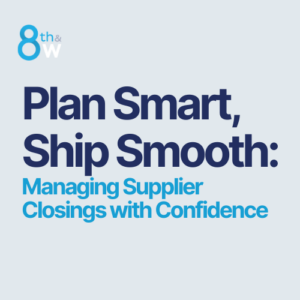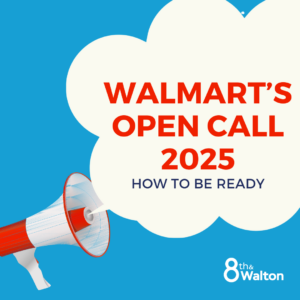Retailers use a variety of pricing strategies to entice customers. From sale pricing to buy-one-get-one (BOGO) and Rollback to clearance, there are many ways to market a reduced price.
However, one price reduction plan is not widely known to shoppers by name. It exists as a necessity to draw customers into a store or add an item to their online cart. An item falling under this pricing strategy is a Loss Leader.
What Is a Loss Leader?
A Loss Leader is an item in a retail store that has a price set below its market cost or minimum profit margin. The retailer loses money every time the product is sold. Loss Leader pricing (also called penetration pricing) can exist on products every day or specifically set on items for just a brief sale period.
How Does Loss Leader Pricing Work?
A Loss Leader, or the item for sale at a reduced price, is intended to “lead” to the subsequent sale of other services or items. The expectation from the retailer is that lost sales on this item will be made up with other purchases in the store. The Loss Leader is the lure to get the customer into the store in hopes they will purchase higher-margin items in the same visit.
Loss Leader Examples
In retail, we see examples of Loss Leaders everywhere. Some are temporary, while others are built into a retailer’s business plan.
Special Shopping Events
Black Friday is the busiest shopping day in the United States. It’s also one example of how the Loss Leader pricing strategy is used. Retailers advertise low prices on big ticket electronics, toys, and appliances. Through a deal made with the supplier, they offer limited quantities at a loss to entice sales on similar items when these sell through.
Small Items in Big Box Stores
Large retail chains want to provide their customers with the brands they know and trust. Sometimes it means taking a loss every day just to keep the item on the shelf. Small name-brand items in toothpaste, detergent, or beauty items are sold at a slight loss or very small margin just to have them available to customers. The loss is usually made up in other high-margin purchases.
Try Before Buying
Free samples. One month of free service. Six months with no interest. From baked goods to streaming services, companies often give customers a small taste of their products to entice them to buy. It’s a loss, but effective.
Loss Leader Advantages
When a retail aims to make money by selling goods at a profit, why set items at Loss Leader pricing? The goal is to stimulate sales in other ways:
Building the Market Basket
As its name suggests, a Loss Leader should use a loss in profit to “lead” shoppers to purchase other goods or services. The hope of the retailer is that shoppers will come to the store or website for a great price on the Loss Leader and then purchase more items on the same visit.
If milk is normally over three dollars per gallon, a grocery store can create business by advertising it for $1.50 for a limited time. The store will take a huge loss on gallons of milk, but they got the customer in the store. Ideally, the customer will then purchase more items since they already made a trip to the store.
Introduction to the Customer
When launching a new product or service, retailers can chalk a loss leading strategy up to their marketing budget. A great way to entice new or first-time customers to try your item is to offer it free or at a loss upon its debut.
Some retail consumable companies launch items with free samples. Video streaming companies give new customers access for free or at an introductory price. Credit card companies sometimes offer reduced interest rates for new memberships. Customers are more likely to give a new item a try if they feel they are getting a special bargain.
Strategizing High-Margin Accessories
Big-ticket items do not necessarily translate to big margins. Televisions, ink-jet printers, and laptops may bring the customer in, but retailers rarely make money on these higher-priced products. Taking a lower margin or loss can lead the customer to higher-margin necessities for these items.
Every retailer knows there is more money to be made on charging cords, surge protectors, and screen cleaners than on the items they support. Marketing these accessories with the loss leaders creates an opportunity for profit. The money lost in beating the competitor on big-ticket items can be easily made up with the items needed to go with the purchase.
Loss Leader Disadvantages
While a Loss Leader pricing strategy catches the eye of customers, it also has few drawbacks:
Lost Profit per Sale
This is a given. As stated already, the goal of the Loss Leader is to entice customers to purchase other items. Even as a successful strategy, the lost profit must be factored into the annual sales or set sale period.
Loss Leaders Not “Leading”
Loss leaders must lead shoppers to purchase other items or services to work effectively. A very strategic shopper can make this difficult. Retailers can experience huge losses from customers only interested in the Loss Leaders, otherwise known as “cherry picking.”
Cherry picking is a casual way retailers describe shoppers only interested in purchasing sale or loss leading items. These customers check the sale ads every week and purchase a few items in various stores. They aim to save money, not time, so the loss leading strategy fails to entice them to more profitable purchases in the store.
Impact on Smaller Retailers
Large retailers like Walmart, Target, Lowe’s, and Home Depot can carry loss leading items every day with no specific sale advertised. Their size and amount of goods and services they offer allows them to absorb the cost of Loss Leaders and make up for it in other areas.
Smaller chains and independent stores try to compete but have a harder time taking a loss on items. The struggle is not being able to take a loss on the name brand items like the bigger stores can for longer periods of time.
Impact on Suppliers
When a retailer chooses to sell a name-brand item at a loss, it can put a strain on the relationship with the supplier over time. The customer begins to expect their name-brand item will be on the shelf, and the retailer wants to match or beat competitor pricing.
Over time, the retailer may put pressure on the supplier to cut costs in production. The expectation will be to take less of a loss while offering the item to the customer at the same price. It will fall on the supplier to make it happen from their end.
When to Use Loss Leader Pricing
As stated previously, using Loss Leader pricing is effective to get customers into the store. While shopping for the advertised item, they may pick up other high-margin items to offset the loss.
Another time to employ Loss Leader Pricing is to help control unwanted inventory. This is normally used at the end of a particular season or end of a shopping event.
Customers will take advantage of marked-down candy after Valentine’s Day and Halloween. Many retailers take losses on Christmas décor the week of and just after December 25.
Using a Loss Leader technique is also effective to reduce inventory on seasonal clothing (swimsuits, sandals, snow boots, winter coats, etc.). Larger items like bar-be-que grills, inflatable pools, and patio furniture will also take losses or lower margins to make way for more seasonal appropriate inventory.
Loss leader pricing is not confined to brick-and-mortar stores. It’s also a great marketing practice for online sales. Lower-priced items are usually featured on a site’s landing pages or in their digital ads. The goal is for customers to add complementary items to their cart with the loss leading purchase.
Do Loss Leaders Work?
It’s easy to see why a Loss Leader would work in the short term. A large television at a very low price will drive numerous customers into a store. But Loss Leader pricing is working each day on everyday items.
One example is razors. Razors packaged with a blade or two can be sold at a loss or low margin. However, a package of blades by themselves has a much higher margin. The supplier is willing to take a loss on the razor thinking the customer will be back eventually to purchase more blades.
Another Loss Leader tactic is a limited supply of the item. Electronics, appliance, and car ads will sometimes feature one item at a very low price. When the customer goes to the store and finds the advertised item is sold out, there’s a chance they’ll purchase something else.
Is Loss Leader Pricing Illegal?
The practice of loss leader pricing has long been criticized as unfair, anti-competitive, and discouraging to new business growth. Going back to the issue of smaller retailers, some may feel they can not enter the market or stay competitive with the big chains that can absorb the cost of loss leaders.
Is the practice illegal? Loss Leader pricing can be illegal, depending on what state the retail store is in and what products it carries.
The Federal Trade Commission lists states where Loss Leader pricing is completely banned, banned only on select items, or perfectly legal. Research local guidelines for your area before initiating a Loss Leader strategy.
How Does Walmart Use Loss Leader Pricing?
Walmart uses Loss Leader pricing in a variety of ways. One strategy is on national brand consumables. To stay competitive and offer customers the Everyday Low Price, Walmart will take a loss on select consumable brands.
Another common practice of Loss Leader pricing at Walmart is one practiced by many retailers: strategic store placement.
Grocery items like milk, bread, and eggs will many times be set as Loss Leaders. The amount of loss or the length of time is not nearly as important as the fact that these items are usually located in the back of the store. If the price draws the customer in, they must go through the whole store to pick up the item. This creates an excellent opportunity for impulse buys.
Conclusion
Using a Loss Leader pricing strategy is a proven method of attracting new customers, driving sales, and maintaining inventory levels. Before trying it for the first time, research the legal guidelines in your area. Work with your analysts to forecast the loss your business will experience and how it will absorb it in other areas.
For more insight on Loss Leader pricing and other growth strategies, contact 8th & Walton for a free consultation.




